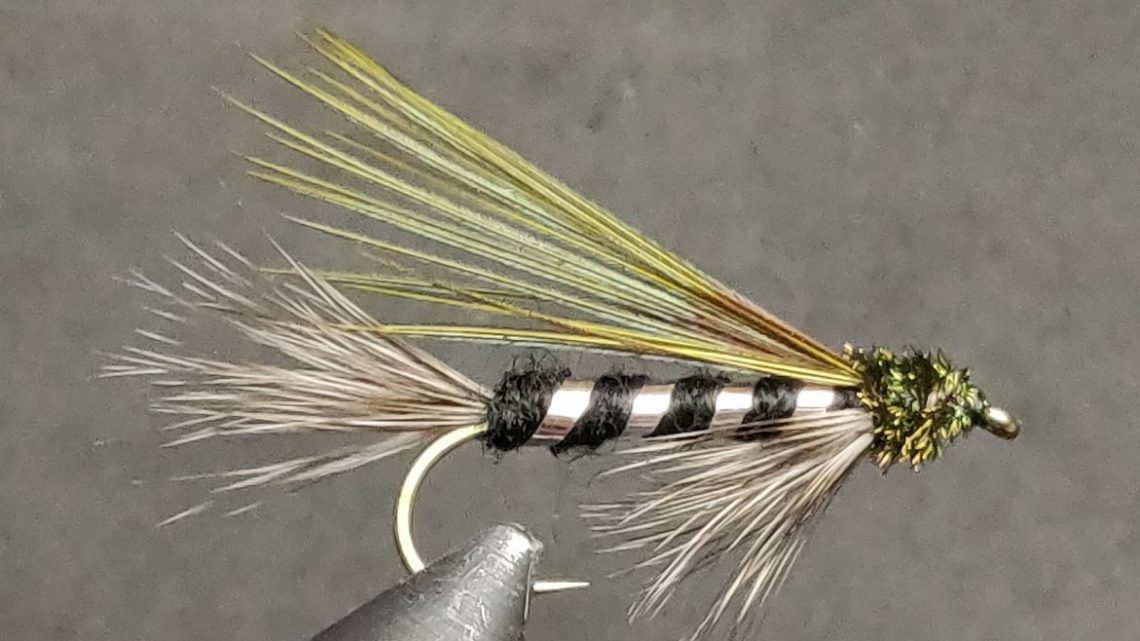This pattern is named after the late Dr. Donald A. Spratley of Mt. Vernon, Washington. It is one of the most effective wet fly patterns in British Columbia, particulary in waters with decent caddis fly hatches. Mrs. Dorothy Prankard Schracht of Mt. Vernon said her husband, the late Dick Prankard, originated the pattern about 1949. She said he called the fly “Doc Spratley” because the doctor came into the store at the time he was tying it and asked Dick what the name was. Dick replied, “I think I’ll call it the Doc Spratley.” Prankard’s wife tied the fly commercially for several years. Dr. Spratley used the pattern in British Columbia. It is still a highly popular pattern wherever large caddisflies hatch.
Some fly fisherman have found that the Doc Spratley tied with an orange body and brown hackle is very effective for cutthroat trout. Another effective variation calls for a borwn body with a gold rib and brown hackle. [1]
In eastern Canada, the fly can be particularly effective at getting smallmouth bass to bite. Don’t let its small size fool you, bass won’t hesitate to strike at such an easy looking meal.
Hook: 3X or 4X long streamer hook, size #6 to #12
Thread: Black
Tail: Guinea fowl (or grizzly) hackle fibers
Rib: silver tinsel
Body: Black yarn
Beard: Guinea fowl (or grizzly) hackle fibers
Wing: Pheasant tail
Head: Peacock herl
[1] Flies of the Northwest, Inland Empire Fishing Club, Spokane, Washington, 1986.
